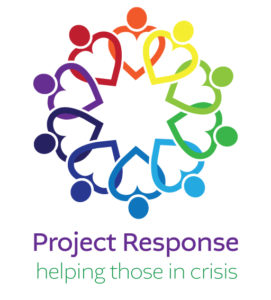Teen Dating Violence
February 17, 2020
“…he loves me so much…”
“When he sees that my number of sent Snapchats has increased, he’s immediately messaging me wanting to know who I have been snapping. He says he only asks because he loves me so much and doesn’t want to see me get hurt by any of my friends.”
This behavior is not normal, nor does this behavior reflect love. This behavior would be considered cyberstalking. Cyberstalking is the misuse of technology to stalk or harass someone. He is using technology to watch your number of Snapchats increase and then calling you out because he knows without a doubt that you have been snapping someone other than him. Cyberstalking is just one of many ways that teens may experience violence in their relationships.
February is nationally recognized as Teen Dating Violence Awareness Month. Teen dating violence, as it can be for adults, can be physical, emotional, sexual, and includes stalking. These forms of violence can occur face-to-face and/or through technology by means of texting, use of social media, as well as many other platforms that can be accessed electronically.
As already mentioned, teen dating violence can take many forms. The physical violence may include hitting, slapping, pushing, pulling hair, etc. Emotional abuse may include name-calling, threatening of violence, controlling behaviors, verbally assaulting, ignoring, humiliating, and isolation from friends or family. Sexual violence may include rape, unwanted touching, coerced nudity, and sexual photographing. Stalking may include physically following, driving by the home and/or place of work, showing up unexpectedly to places you are at, repeatedly calling or messaging, and then the misuse of technology by hacking into email accounts, watching your social media accounts or Snapchat, any form of misuse that invades your privacy. These lists are not all inclusive and can occur in-person or through electronics.
Teens who experience teen dating violence are more likely to suffer from depression and anxiety, engage in unhealthy behaviors such as drugs and alcohol, as well as experience violence in future relationships. For teens who are growing up in a household where relationship violence is present, having a high school partner who is abusive may be considered normal, thus the cycle is repeating. Dating violence during teenage years also puts the victim at a higher risk for experiencing unhealthy relationships later in life as well. Teen dating violence is not normal, is not loving, and should not be acceptable.
What can you do to help prevent teen dating violence? Start talking about it and the effects that it can have! Educate yourself and others on what healthy relationships look like as well as warning signs that may indicate an unhealthy relationship. Should a teen reveal to you that they are in an unhealthy relationship, be supportive and empowering. Listen to them and believe them. Ask questions and help them seek the solution they are looking for. If you do not feel comfortable or equipped to have the conversation, then refer them to someone who is. That may mean asking them who else they would feel comfortable discussing the issue with and then going with them to that person, if you are comfortable with that. The teen opening up to you trusts you and is looking for guidance, so just be supportive even if you don’t have the answers for them. There are resources out there to assist.
Project Response is the domestic and sexual violence agency serving Johnson, Nemaha, Otoe, Pawnee, and Richardson counties. The crisis hotline provides 24/7 confidential and free support to victims of teen dating violence as well as their family and friends. The crisis hotline can be reached at 1.800.456.5764. A few other resources include loveisrespect.org and breakthecycle.org.
If you or someone you know is in an unhealthy relationship, reach out. You are not alone.

